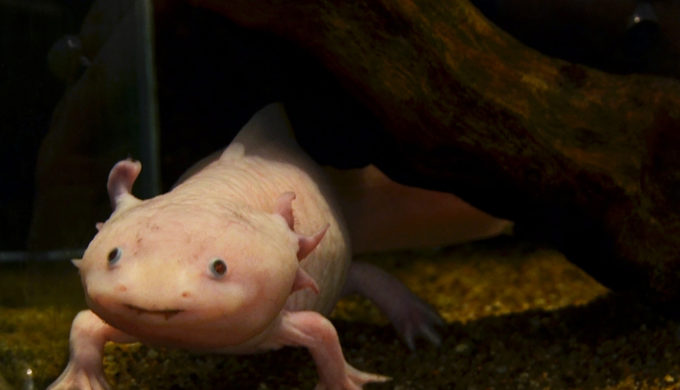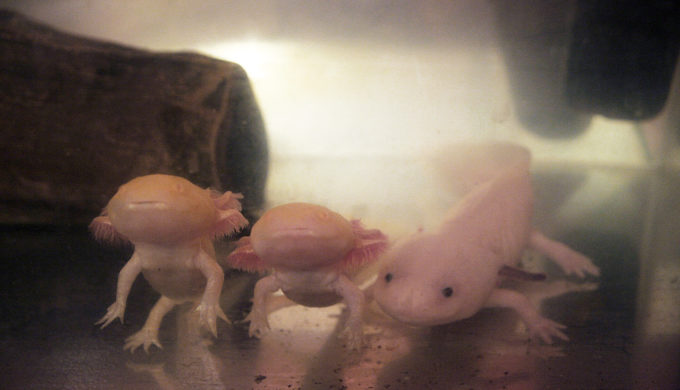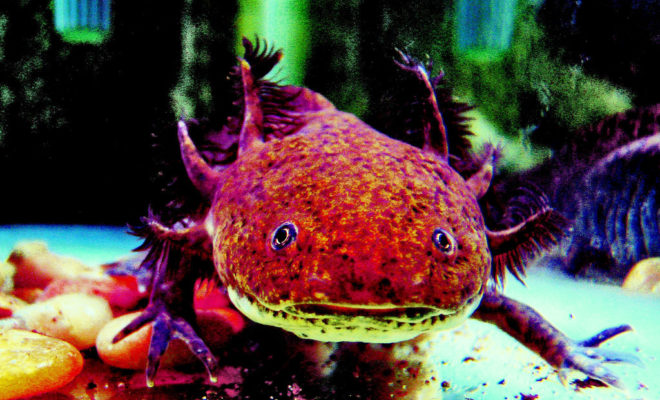A little while back, we shared a video by Breathing For Peace on the Texas Hill Country Facebook page regarding the axolotl. One of our avid readers took a strong interest in the creature and wanted to know more, considering the brief nature of the video and species detail. We were happy to oblige. Also referred to as a Mexican salamander, or “walking fish”, the axolotl is an unusual amphibian species in that it reaches adulthood without going through a metamorphosis. The adults of their species remain gilled and aquatic as opposed to developing lungs and heading for land.
Nature
Axolotls: What Makes Them Unique & Why They’re Being Studied

Photo: Wikimedia
The axolotl species originated from a number of lakes, including Lake Xochimilco (fundamental to the development of Mexico City), but as of 2010, this species was nearing extinction in the wild. Due largely in part to urbanization (such as the vast growth of Mexico City), and the subsequent pollution in the water pollution, these creatures also struggled with invasive species such as perch and tilapia. At one time, axolotls were sold in Mexican markets as food, and as far back as the Aztecs, were considered a dietary staple. They are presently listed by currently listed by the International Union for the Conservation of Nature (IUCN) as being critically endangered in their natural habitat, as well as by the Convention on International Trade in Endangered Species of Wild Fauna and Flora (CITES) as an endangered species. With a steadily decreasing population, axolotls are presently being researched extensively in the scientific community due to their ability to regenerate their own limbs.

Photo: Wikimedia
With respect to their numbers, nature surveys in the years 1998, 2003, and 2008 found there to be 6,000, 1,000, and 100 axolotls per square kilometer respectively in Lake Xochimilco (its natural habitat). In 2013, however, a four-month survey concluded that there were no surviving axolotls in the wild. One-month post-survey, however, two of the species were spotted in the wild amongst a network of canals that lead from Lake Xochimilco. At present, Mexico City is working on conservation efforts for the axolotls through the process of building “shelters” and working to conserve the remaining as well as potential future habitats for these unique salamanders.



